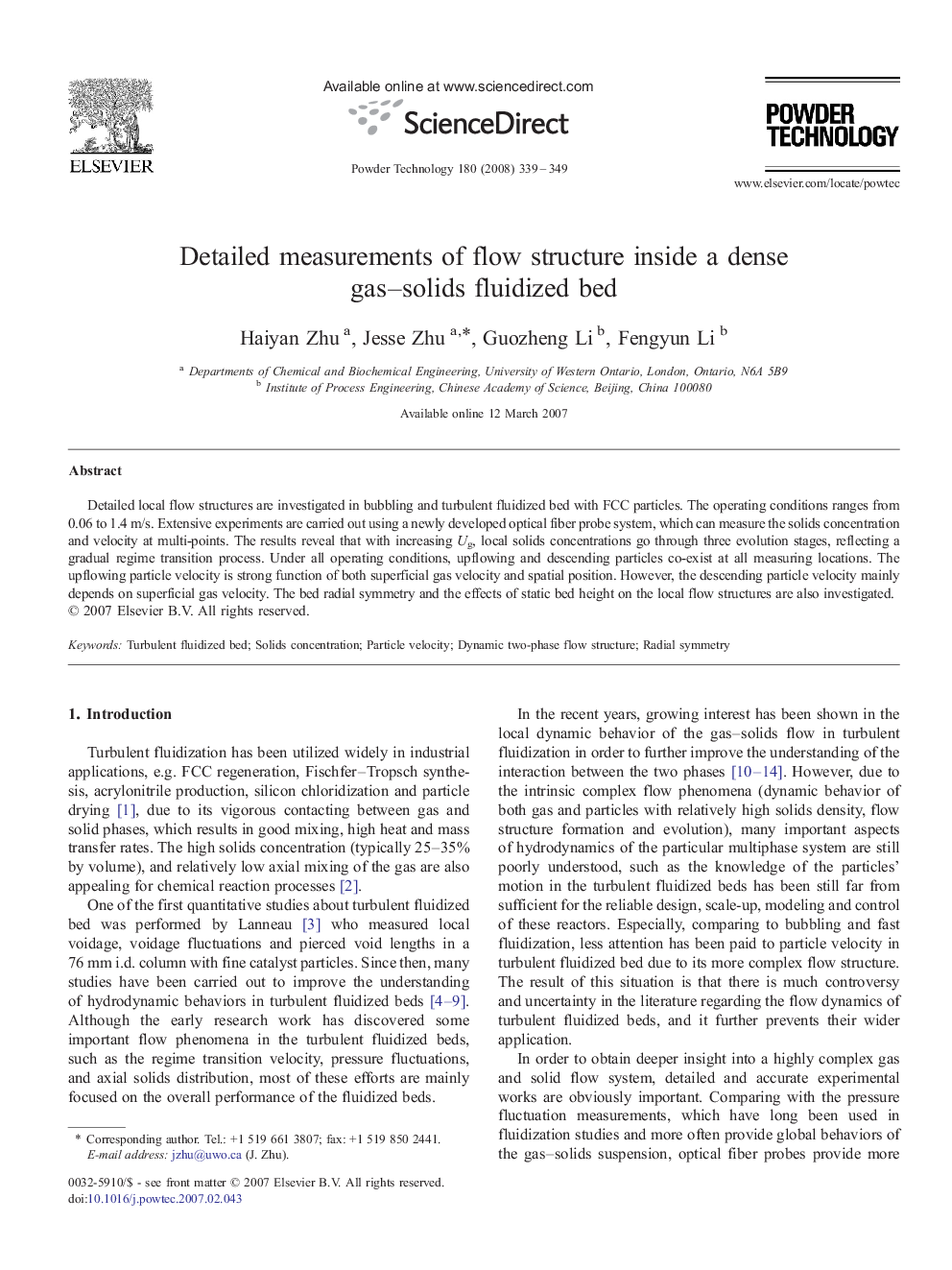| Article ID | Journal | Published Year | Pages | File Type |
|---|---|---|---|---|
| 239082 | Powder Technology | 2008 | 11 Pages |
Detailed local flow structures are investigated in bubbling and turbulent fluidized bed with FCC particles. The operating conditions ranges from 0.06 to 1.4 m/s. Extensive experiments are carried out using a newly developed optical fiber probe system, which can measure the solids concentration and velocity at multi-points. The results reveal that with increasing Ug, local solids concentrations go through three evolution stages, reflecting a gradual regime transition process. Under all operating conditions, upflowing and descending particles co-exist at all measuring locations. The upflowing particle velocity is strong function of both superficial gas velocity and spatial position. However, the descending particle velocity mainly depends on superficial gas velocity. The bed radial symmetry and the effects of static bed height on the local flow structures are also investigated.
Graphical abstractInstantaneous particle concentration and velocity were measured simultaneously to detail the local flow structures during the transition to turbulent fluidization. With increasing gas velocity, the local transition is found to be a gradual process, starting from the top of the bed. With increasing solids inventory, the local transition velocity is a function of the distance from the bed surface.Figure optionsDownload full-size imageDownload as PowerPoint slide
